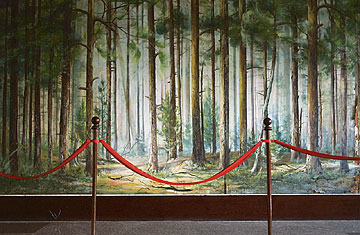
Reunification Palace
Best TIme Capsule
Ho Chi Minh City, Vietnam
Imagine Austin Powers' flat conceived by francis Ford Coppola at the height of his Apocalypse Now grandiosity, and you have the Reunification Palace in central Ho Chi Minh City. Architecturally, it's a beauty, but the décor and furnishings have not, at least in stylistic terms, aged well. Stepping inside the palace's now kitsch rooms transports one back to the late 1960s and mid-1970s, when the Independence Palace, as it was then called, was the seat of power in South Vietnam.
When communist tanks crashed through the palace's ornate iron gates on April 30, 1975, South Vietnam became history. But rather than raze the lavish building — set in 12 hectares of lush green lawns and tall trees — the victorious North Vietnamese chose to preserve it as a trophy of national unification, and, no doubt, an example of the south's wartime excess. Designed by Vietnam's renowned architect, the Paris-educated Ngo Viet Thu, the palace was completed in 1966 and melds Modernism's hard lines with traditional Vietnamese motifs. Preserved as it was when Duong Van Minh, the last President of South Vietnam, surrendered to the north, it's still studded with chandeliers, elegant artworks and carpets adorned with dragons and symbols of the imperial court. The highest floor features a room with four glass sides giving sweeping city vistas. It was designed as a meditative space for the President, but during the war was used as a disco and casino. Other highlights include a red-upholstered cinema, a basement with war rooms (replete with battle maps and radios) and a presidential helicopter parked on the roof. Today, the only invaders the President might want to flee from are the tourists who cross the disco's polished wood dance floor to take in the view of Ho Chi Minh City. Its streets are still the scene of a revolution, only this one is peaceful and economic.